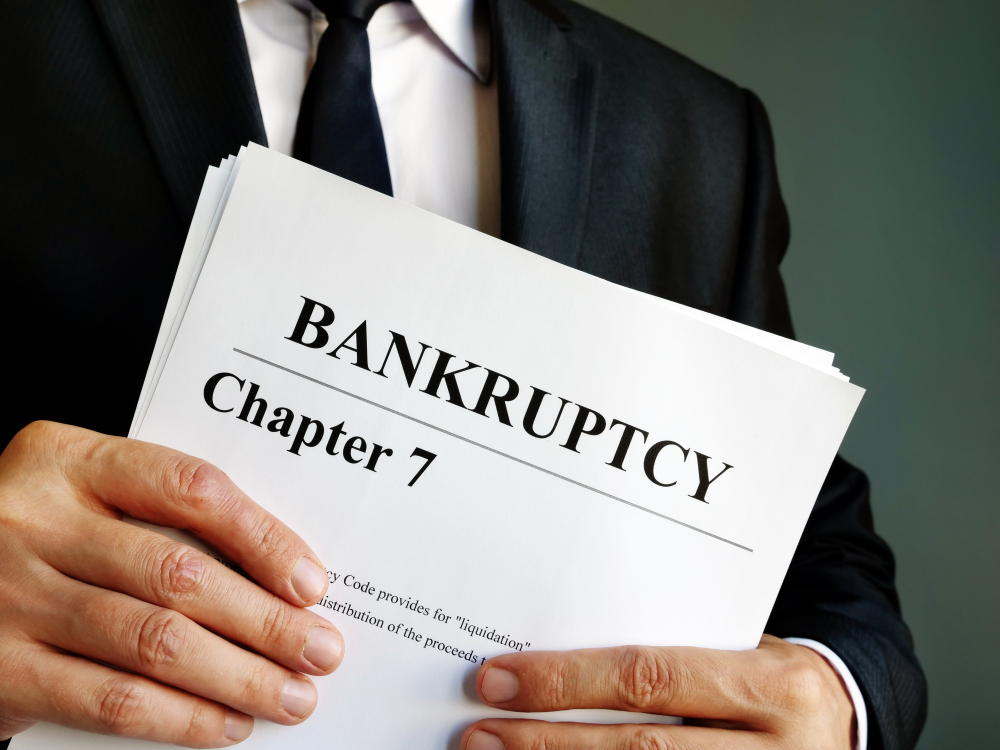The process for filing Chapter 7 bankruptcy can be time-consuming, difficult, and complicated enough to discourage people from filing bankruptcy or even speaking with a bankruptcy lawyer—even when bankruptcy would be the best option for them. But it doesn’t need to be that way. We are here to help you through every step of the process, offering guidance on how to make the process smooth and easy while advising you on the best way to approach filing bankruptcy.
Don’t let the process of filing Chapter 7 bankruptcy intimidate you. We have years of experience helping clients successfully file bankruptcy in a way that is manageable and easy to understand. By breaking it down into smaller, more manageable steps, bankruptcy can change from being time-consuming, difficult, and complicated to quick, easy, and simple. Here are is a step-by-step breakdown of the process for filing Chapter 7 bankruptcy.

Step 1: Credit Counseling
At most six months before someone files for chapter 7 bankruptcy, they must receive credit counseling from an agency that has been approved by the United States Trustee’s Office. A list of approved agencies is available on their website.
Step 2: File a Petition
Before the bankruptcy process can begin, the person filing it must fill out a petition and other forms in court. These forms include the bankruptcy petition, a list of income and expenses, a form to claim property exemptions, and other financial information. Once this paperwork has been completed, most creditor collection actions against you will be stopped until your bankruptcy case has been completed.
Step 3: The Trustee Takes the Case
Once the paperwork has been signed, the court will appoint a trustee to handle your case. The trustee will review your paperwork and distribute your nonexempt property to your creditors.
Step 4: The Meeting of Creditors
The court will inform you of when the meeting of creditors, or 341 meeting, will be. You will be required to attend the meeting and answer questions about your finances, bankruptcy forms, and other topics.
Step 5: Eligibility Is Approved or Denied
After the meeting of creditors, the court and trustee will have all of the information necessary to determine if you are eligible to file Chapter 7 bankruptcy. If the court denies your request, you may still be eligible to file for Chapter 13 bankruptcy. If your request is approved, you will continue the process.
Step 6: Nonexempt Property Is Handled
Once your eligibility has been approved, your trustee will evaluate your nonexempt property and distribute it according to how they see fit. At this point, you will be able to negotiate with the trustee to keep some nonexempt property by either paying for it or giving up exempt property instead.
Step 7: Secured Debts Are Handled
If you have any debts that are backed by collateral, the creditor has the right to take them. You must give the property back, pay the creditor what the property is worth, or agree to still owe the debt after your case is over.
Step 8: Financial Management Course
Before your debt is discharged, you will need to complete a debtor’s course, in which you will learn how to appropriately manage your finances in the future.
Step 9: Discharge
Usually, from three to six months after you have filed bankruptcy, you will receive your discharge by mail. Once you receive the discharge, all of your dischargeable debts will be discharged and you will be able to restart your financial journey. This is why Chapter 7 bankruptcy is commonly referred to as the “fresh start” bankruptcy.
Step 10: Case Closed
A short time after your discharge has been granted, your bankruptcy case will be closed and you will no longer be liable to the creditors the court decided upon.



 801-316-8217
801-316-8217